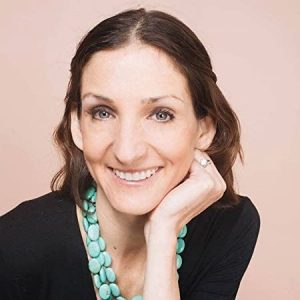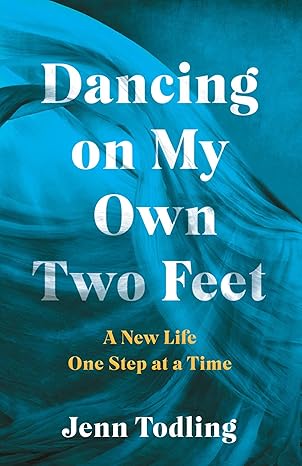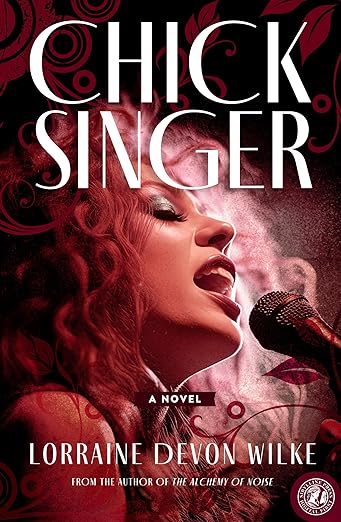Writing my “pandemic novel” By Kim Hooper
By Kim Hooper
 In those early months of the pandemic, it made no sense to write. There were more limitations on my time than ever before. It was ridiculous to even consider. And, yet, I felt I had to write, a screaming ache within, a primal need to escape into a world of my own creation, a place where I could explore my fears and anxieties behind the safe wall of fiction. I never questioned if this desire for escape was selfish. I knew it would not limit my abilities to be the mother my daughter needed; it would only enhance them. As writer Alison Stine said, “If I gave up writing, I would not be a good parent because I would not be a complete person.” I needed to be a complete person. I felt like if I didn’t write, I might die—not physically, but in every other way.
In those early months of the pandemic, it made no sense to write. There were more limitations on my time than ever before. It was ridiculous to even consider. And, yet, I felt I had to write, a screaming ache within, a primal need to escape into a world of my own creation, a place where I could explore my fears and anxieties behind the safe wall of fiction. I never questioned if this desire for escape was selfish. I knew it would not limit my abilities to be the mother my daughter needed; it would only enhance them. As writer Alison Stine said, “If I gave up writing, I would not be a good parent because I would not be a complete person.” I needed to be a complete person. I felt like if I didn’t write, I might die—not physically, but in every other way.
Novelist Clarice Lispector said, “I write to save someone’s life, probably my own.” With this quote in mind, I arranged for an hour a day to write, an hour of quiet while my daughter went for a “car nap” with her dad. There was no time for writer’s block. I came to view such “blocks” as the luxury of writers who have all the time in the world. I had an hour a day. I had to shift immediately from “mom mode” to “writer mode” and make the most of that time.
In her essay, “Becoming a Mother-Writer” in Poets & Writers, Namrata Poddar talks about how mother-writers “write from an acutely pulverized inner self almost every day.” This was never truer than during the pandemic. Many mother-writers like me found themselves working in extremely fragmented ways. As Olivia Campbell wrote in “The Heartbreaking Ingenuity of the Mother-Writer” for Lit Hub, “We have this heady image of authors penning their books while sitting peacefully at oversized hardwood desks overlooking vistas of lush trees or skyscrapers. But if you’ve read a book penned by a woman with young children recently, there’s a significant chance it was written while hiding, losing sleep, or using inventive distractions…Moms are wily, persistent creatures.”
Wily, persistent creatures indeed.
At first, I didn’t know what, exactly, I wanted to write with my one wild and precious hour per day. I just knew I had to do something about the pent-up energy within. Perhaps because of the pandemic, those apocalyptic-feeling early days, I felt an even greater sense of urgency to write. In those early days, we all came to see life as unprecedentedly fragile. We all felt like death was within arm’s reach.
In the midst of this heaviness, what came to me was the character of Dave, a dad on the autism spectrum who is obsessed with ways the world could end. His doomsday prepping is a desperate attempt for control (or an illusion thereof). It is a necessary distraction from the ache he feels in the wake of losing his wife. The only thing keeping him from falling down a rabbit hole of rumination is his 15-year-old daughter, Cleo, the counterbalance to his pessimism, the one person who forces him to consider if hope is possible after all.
During days spent with my daughter, I typed ideas into the Notes app of my phone, scribbled thoughts on Post-its. I researched—reading, googling—whenever she was pleasantly occupied, playing by herself for handfuls of precious minutes. By the time I got my one hour, I was ready to transcribe what had been writing itself all day in my head. It was an explosive rush, a dam bursting—manic, frenetic. When my daughter returned from her “car nap,” I was never ready to stop, but I did, which just made the return the next day that much sweeter.
Somehow, over months of this routine, a book was written. I use the passive voice because that’s how the experience felt—the book just sort of became. Ways the World Could End is my “pandemic novel,” though it’s not really about the pandemic itself. It’s about grief and loss and longing—all things that the pandemic stirred up in many of us. For me, this book will always represent the magic of wily, persistent mothers who find it impossible to set aside the passions that make their hearts sing.
There were times I questioned the value of writing a novel in the midst of such world chaos and upheaval. In the grand scheme of things, it felt a bit silly. But, in another sense, necessary. As writer Crystal Hana Kim said, “Was it worth it to play around with the order of words on a page, to create characters that didn’t exist when there was so much devastation in the world? When we were emotionally, physically, and mentally drained?… It is always worth it—to search for meaning through the act of writing, to discover ourselves through our narratives, to create art by linking words together.”
Readers need books as much as writers need to write them. Perhaps this truth has become more resonant since March 2020. We’ve all needed escape, an opportunity to explore our fears and anxieties behind the safe wall of fiction. We’ve all lost so much in the past two years—a sense of security, a sense of ourselves—and books can be the steadfast friend reaching out to take our hand and lead us to a place where more is possible, where hope reigns.
—
Kim Hooper is the author of six novels: People Who Knew Me (2016), Cherry Blossoms (2018), Tiny (2019), All the Acorns on the Forest Floor (2020), No Hiding in Boise (2021), and Ways the World Could End (2022). She is also co-author of All the Love: Healing Your Heart and Finding Meaning After Pregnancy Loss (2021). Kim lives in Southern California with her husband, daughter, and a collection of pets.
WAYS THE WORLD COULD END
 CAPISTRANO BEACH, CA — Dave is a dad with Asperger’s. He sees the world differently than most, and he feels like he has no idea what he’s doing when it comes to raising his 15-year-old daughter, Cleo. She also feels like he has no idea what he’s doing, especially now that her mom is gone.
CAPISTRANO BEACH, CA — Dave is a dad with Asperger’s. He sees the world differently than most, and he feels like he has no idea what he’s doing when it comes to raising his 15-year-old daughter, Cleo. She also feels like he has no idea what he’s doing, especially now that her mom is gone.
They were both better off when Jana was around―Dave’s wife, Cleo’s mother. But now she’s not, and they are left to figure out life on their own. Dave dedicates his attention to his newfound hobby of doomsday prepping, researching the various ways the world could end. Cleo feels like her world already has.
Everything changes when neighbors move in, threatening their isolation in the hills of San Juan Capistrano. Cleo is intrigued by the new girl, Edie, and soon finds out the intrigue is mutual. Dave, not at all intrigued, is forced to come to terms with everything he cannot control.
As they struggle to live in the present, both Dave and Cleo must dare to revisit the tragic past they share. What happened to Jana? Who was she, really? Who are they without her?
Ways the World Could End is a story of grief, friendship, and love―the love between parents and children, between spouses, between teenagers, and between strangers. It is a story that requires us to consider the bounds of forgiveness, what we’re willing and not willing to forgive, and reminds us that often the hardest thing to forgive is ourselves.
—
Category: How To and Tips




























